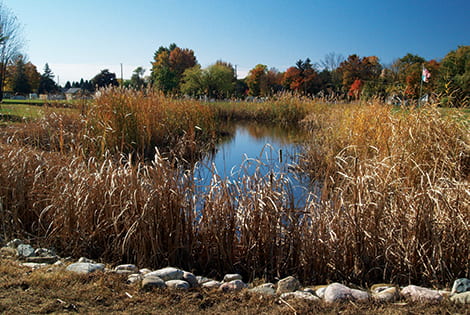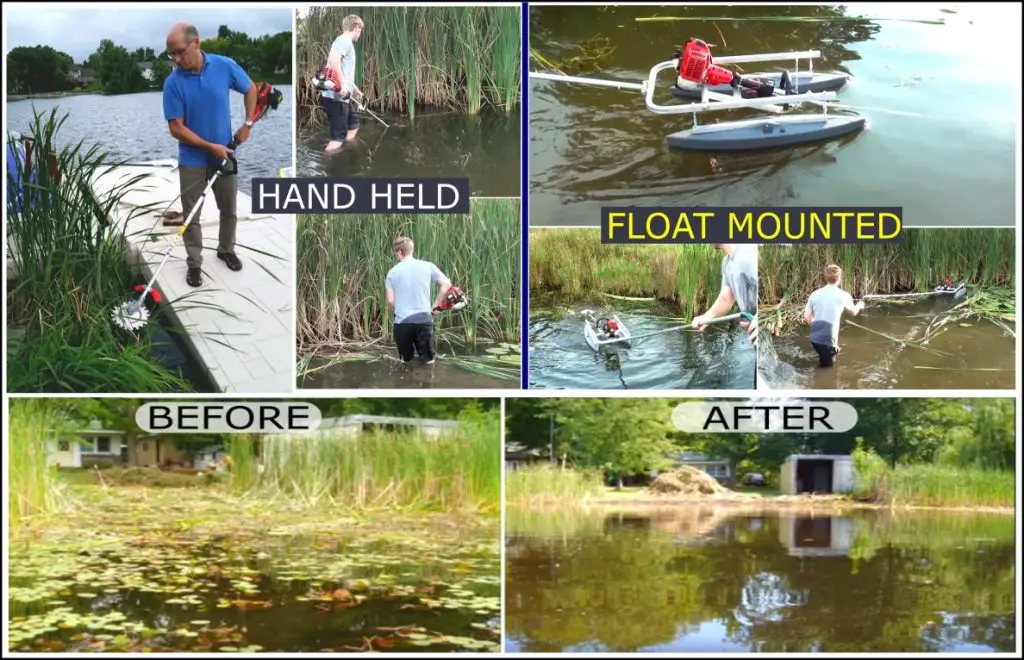If you have a pond on your property, you may have encountered the challenge of dealing with cattails. While these aquatic plants can add natural beauty to your pond, they can also become invasive and overtake the water body if not properly managed. In this comprehensive guide, we will explore effective methods to get rid of cattails in your pond and restore balance to the aquatic ecosystem.
Understanding Cattails
Cattails, scientifically known as Typha, are perennial wetland plants that are commonly found in ponds, marshes, and other water bodies. These plants are characterized by tall, slender stems and distinctive cigar-shaped brown flower spikes. Cattails reproduce through seeds and rhizomes, allowing them to spread rapidly and establish dense colonies in favorable conditions.
Why Control Cattails?
While cattails serve important ecological functions, such as providing habitat for wildlife and stabilizing shorelines, they can also pose several problems when they grow excessively in a pond. An overabundance of cattails can lead to:
- Decreased oxygen levels in the water
- Impeded water flow
- Reduced aesthetic appeal of the pond
- Limited recreational activities such as fishing and boating
With these factors in mind, it becomes necessary to manage cattails to prevent them from dominating the pond ecosystem.

Credit: www.youtube.com
Methods for Removing Cattails
There are several approaches to controlling and removing cattails from a pond. It’s important to note that a combination of methods may be necessary for effective and long-term management. Let’s explore some of the most commonly used techniques:
1. Mechanical Removal
One of the most straightforward methods for dealing with cattails is mechanical removal. This can be done using tools such as rakes, weed cutters, or aquatic weed mowers. By physically cutting and removing the cattails, you can temporarily reduce their population and open up the water surface. However, this method may need to be repeated regularly as cattails can quickly regrow from their rhizomes.
2. Chemical Control
Another common approach to managing cattails is through the use of aquatic herbicides. Selective herbicides designed specifically for cattail control can be applied to the foliage or directly into the water to target the root system. It’s crucial to follow the manufacturer’s instructions and local regulations when using herbicides to ensure minimal impact on the surrounding environment and aquatic life.
3. Biological Control
Biological control methods involve introducing natural predators or competitors to limit the growth of cattails. For example, grass carp, a species of herbivorous fish, can be stocked in the pond to consume cattails and other aquatic vegetation. However, this method requires careful consideration of the potential impacts on the overall pond ecosystem and should be implemented under the guidance of aquatic management professionals.
4. Barrier Installation
Physical barriers can be installed to restrict the spread of cattails within the pond. This may involve the use of geotextile fabric or specialized barriers designed to block sunlight and prevent the growth of cattails in specific areas. While effective, this method may require regular maintenance and monitoring to ensure its continued success.
5. Wetland Restoration
For a more holistic approach, wetland restoration techniques can be employed to create a balanced and diverse aquatic ecosystem. This may involve regrading the pond edges, enhancing native plant diversity, and promoting the establishment of beneficial wetland species that can outcompete cattails naturally. While this method may take longer to yield results, it can lead to sustainable, long-term cattail management.

Credit: www.thepondguy.com
Best Practices for Cattail Management
Regardless of the method chosen for cattail control, there are several best practices to keep in mind to ensure effective management and environmental stewardship:
1. Proper Identification
Before implementing any control measures, it’s crucial to accurately identify the species of cattails present in the pond. Different cattail species may respond differently to control methods, so understanding the specific type of cattail is essential for targeted management.
2. Timing Of Control Measures
Timing is critical when it comes to implementing control measures for cattails. Depending on the method chosen, the effectiveness of treatment may vary throughout the growing season. For example, herbicide application may be most effective during the plant’s active growth period, while mechanical removal may be more successful in the early stages of growth.
3. Consideration Of Wildlife
When managing cattails, it’s important to consider the potential impact on wildlife that rely on the plants for habitat and food. Implementing control measures in a phased approach and providing alternative habitat options for wildlife can help minimize disruptions to the pond ecosystem.
4. Monitoring And Maintenance
After implementing cattail control measures, regular monitoring and maintenance are necessary to assess the effectiveness of the chosen method and address any regrowth or new infestations. This ongoing commitment is essential for long-term cattail management.
5. Consultation With Experts
For complex cattail management scenarios or when dealing with protected water bodies, seeking guidance from aquatic management professionals, ecologists, or local environmental agencies can provide valuable insights and ensure compliance with regulations.
Conclusion
Dealing with cattails in a pond requires a strategic and multifaceted approach to achieve long-term control and maintain a healthy aquatic environment. By understanding the characteristics of cattails, implementing appropriate control methods, and adhering to best management practices, pond owners can effectively manage cattail populations and preserve the ecological balance of their water bodies.
Whether through mechanical removal, chemical control, biological interventions, barrier installations, or wetland restoration, the key lies in proactive and informed management strategies that prioritize the sustainability and biodiversity of pond ecosystems.
As stewards of our natural resources, it is our responsibility to strike a balance between conservation and practical management, ensuring that our ponds remain vibrant, functional, and ecologically resilient for generations to come.





